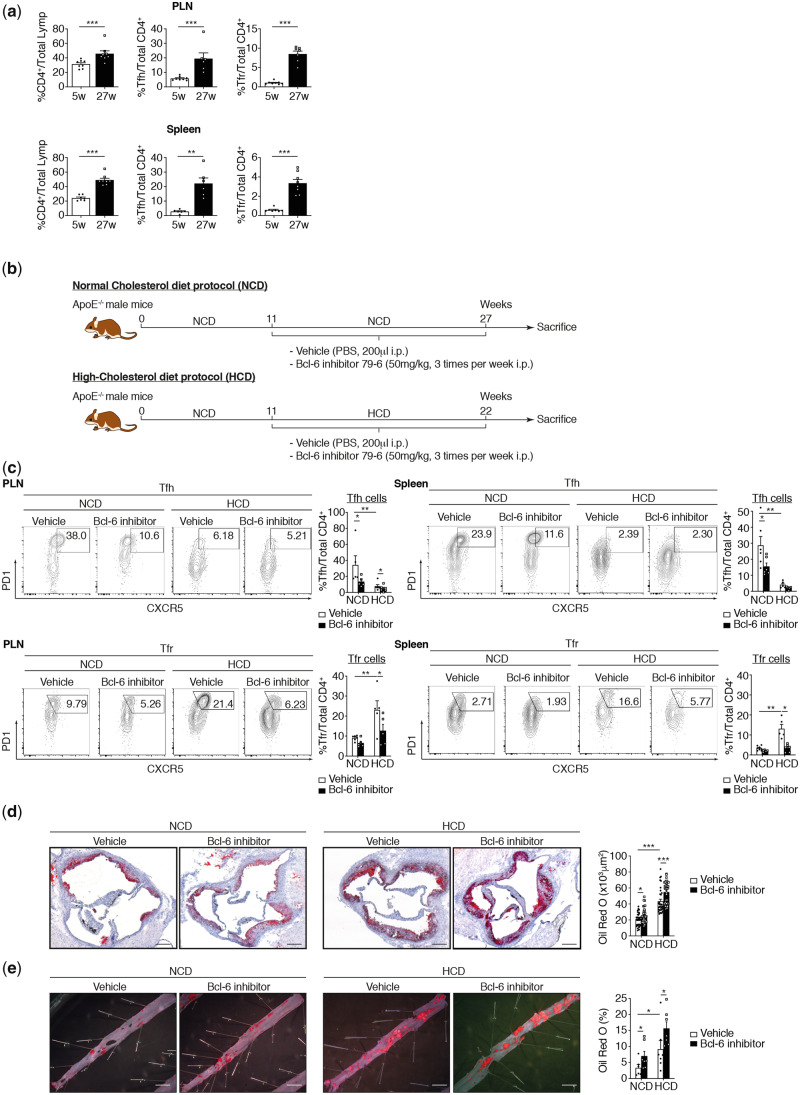Figure 1.
TFR population controls pro-atherogenic TFH population on a high-cholesterol diet. (A) Lymphocytes from spleen and peripheral lymph nodes (PLN) of Apoe−/− mice collected at Weeks 5 and 27 were stained for CD4, CD25, CXCR5, PD1, and Bcl-6. Tabulated results from all mice are presented as percentage of CD4+. (B) Mouse atherosclerosis protocols and treatment schedule (n = 5–8 mice/group). (C) Effect of Bcl-6 inhibitor on TFH and TFR populations on NCD and HCD fed mice (PLN TFH: n = 5–8 mice/group; PLN TFR: n = 5–6 mice/group; spleen TFH: n = 5–6 mice/group; spleen TFR: n = 5–8 mice/group). (D) Quantification of atherosclerotic lipid content and representative microphotographs of aortic root plaques (Oil Red O staining) in Apoe−/− mice treated with vehicle (PBS) or Bcl-6 inhibitor under NCD and HCD (n = 6–7 mice per group/5 slides per mice). Original magnification, ×10. Scale bars, 400 μm. (E) Quantification of atherosclerotic lipid content and representative microphotographs from Oil Red O-stained thoracoabdominal aortas (n = 5–7 mice/group). Scale bars, 500 μm. The non-parametric Mann–Whitney U test was used for statistical analysis: *P ≤ 0.05; **P ≤ 0.005; ***P ≤ 0.0005. All data were represented as mean ± SEM.

